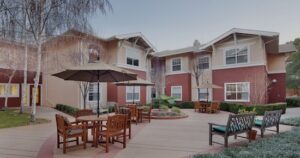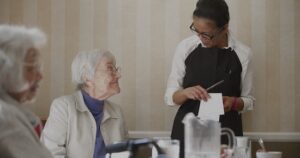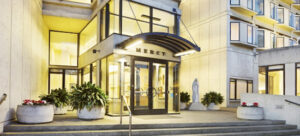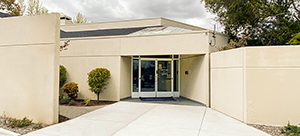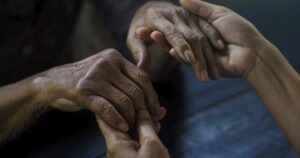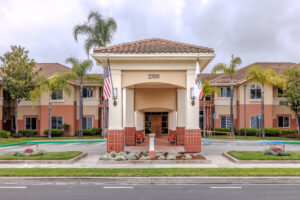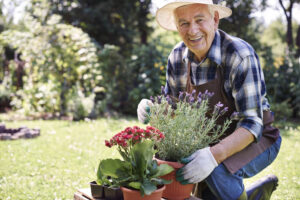Yes, senior living communities are growing. In fact, by many estimates, they are growing faster than at any other time in history. If you are considering a move to an older adult community, this fact may affect your options and decisions. Learn what you need to know about the increase in occupancy at retirement communities, what is fueling it, and how it impacts you.
How Fast Are Senior Living Communities Growing?

Industry reports indicate that the demand for housing for older adults is rising at levels not seen since before the COVID-19 pandemic. Occupancy rates in many facilities are nearing 90%, which indicates the need for new construction to meet growing demand.
Why Are Senior Living Communities Growing?
Many factors underpin the growth in demand for living accommodations for older individuals. One of the most significant contributing factors to the growth of older adult communities is the sheer size of the baby boomer generation. Born in the post-WWII years, this generation is the basis for the rapidly aging American population.
The National Academy of Social Insurance estimates that by 2031, there will be approximately 75 million Americans age 65 and older, a tremendous increase from the 39 million in 2008.
Baby boomers reaching retirement age have fueled changes to the market for housing for older individuals. They have also impacted the market size, which is growing between 4% and 5% each year.
What Types of Senior Living Communities Are Growing?
Not all elderly living communities are growing at the same rate. Some are relatively flat, while others barely keep up with demand. Understanding why certain types of communities are growing becomes easier when you understand which are experiencing the greatest demand.
Assisted Living
This is perhaps the largest driver of growth in the older adult living market. Assisted living refers to communities where residents can get support with activities of daily living. These communities typically provide educational, social, and physical fitness activities for enrichment. They provide more autonomy than skilled nursing while still offering older adults the assistance they need to live with dignity.
Skilled Nursing

Skilled nursing is an option for individuals who need intensive care. Medically trained staff may attend to feeding tubes, catheters, medications, wound care, and assistance with activities of daily living (ADLs).
There was a rapid decline in the demand for skilled nursing facilities during and immediately after COVID. However, this appears to be on the rebound, with moderate growth in occupancy rates through 2023.
Specialized Care Communities
These are often dedicated communities, although some residences have portions of them designed for specialized care. They cater to older adults who need specialized attention, such as those with Alzheimer’s or mobility challenges. Memory care living is one type of specialized facility that has seen incredible growth. Some people consider this a subgroup of skilled nursing, but not all specialized communities offer full medical care.
In these communities, people with dementia and related illnesses can get appropriate support and encouragement. They are especially helpful at providing peace of mind to family members who struggle to accommodate loved ones through the changes as their disease progresses.
Independent Living
Independent living is another rapidly growing segment of the market. It encompasses many types of retirement and age-restricted communities. Some of these communities have one home style, such as apartments or townhomes, while others include a mix of housing options.
Many older adults choose to move to a retirement community to escape home maintenance and repairs. In these situations, you want to find one that handles all exterior tasks, including gutter cleaning, painting, landscaping, and snow removal. Some also offer interior maintenance for major home systems like HVAC.
While many variables exist in these types of communities, there are also some commonalities. For example, they tend to have active social calendars. Fitness activities and centers often feature prominently and provide a safe place for older adults to exercise with their peers. Many offer transportation to off-site events or shopping centers.
Where Are Senior Living Communities Growing?
Many older adults move to warmer climates after retirement. This allows them to enjoy the outdoors year-round without worrying about the hassle of snow-covered roads and sidewalks. Therefore, it is not surprising to hear that some of the highest growth rates in these communities are in warmer regions.
Florida, Arizona, Texas, and parts of Southern California have all seen a rise in demand for accommodations for older adults. This is commonly seen in the mega-communities in Florida, which some people refer to as the Retirement Capital of the U.S.
Another interesting trend is the increase in older adult communities within rural areas. The safety, slower pace of life, and lower living costs are attractive features that draw older adults — and the investors and developers that cater to them — to smaller towns.
How Does This Growth Affect Older Adults Planning a Move?

The growth of senior living communities affects older adults looking to move in several ways. In some ways, it provides additional opportunities and choices. In others, it restricts them.
Larger Diversity of Community Choices
One of the biggest opportunities to come out of the growth in communities designed for older people is the diversity of community choices. Older adults can choose from housing styles and sizes that are comparable to standard developments. Many communities offer extensive amenities, including:
- Barber shops and salons
- Dining options
- Fitness centers and exercise classes
- Scheduled social activities
- Transportation services
Additionally, many community choices include skilled care plans and assistance with ADLs.
Affordability
The cost of senior living varies widely. Depending on where you are and what type of community you want to move into, you may benefit from rapid growth. New construction means lower occupancy rates, which may help you to find specials. Additionally, many new rural communities offer affordable options compared to their urban counterparts. On the other hand, communities that have high occupancy rates and low turnover are likely to be more expensive.
Wait Times
Where development outpaces occupancy, you may find very short wait times for these communities. This can be a huge benefit for older adults who receive a medical diagnosis and need specialized care on short notice.
Communities that are in high demand may see longer wait times. This is especially true for those in regions with large retirement populations.
Why do Growing Senior Living Communities Matter?
The fact that senior living communities are growing affects everyone, not just older adults. Elder Care Alliance can help you navigate the transition to older adult living at one of our attractive and safe California communities. Schedule your visit today.

